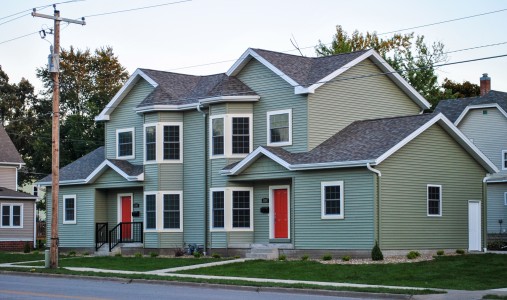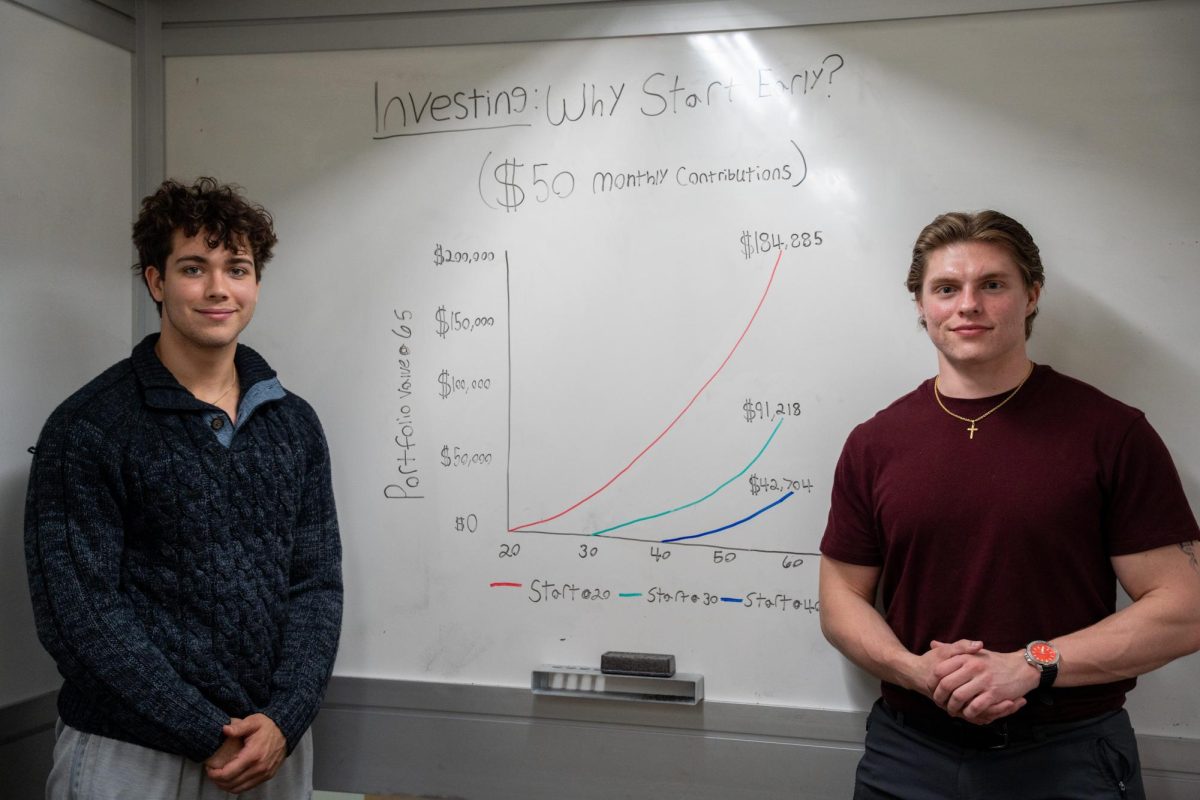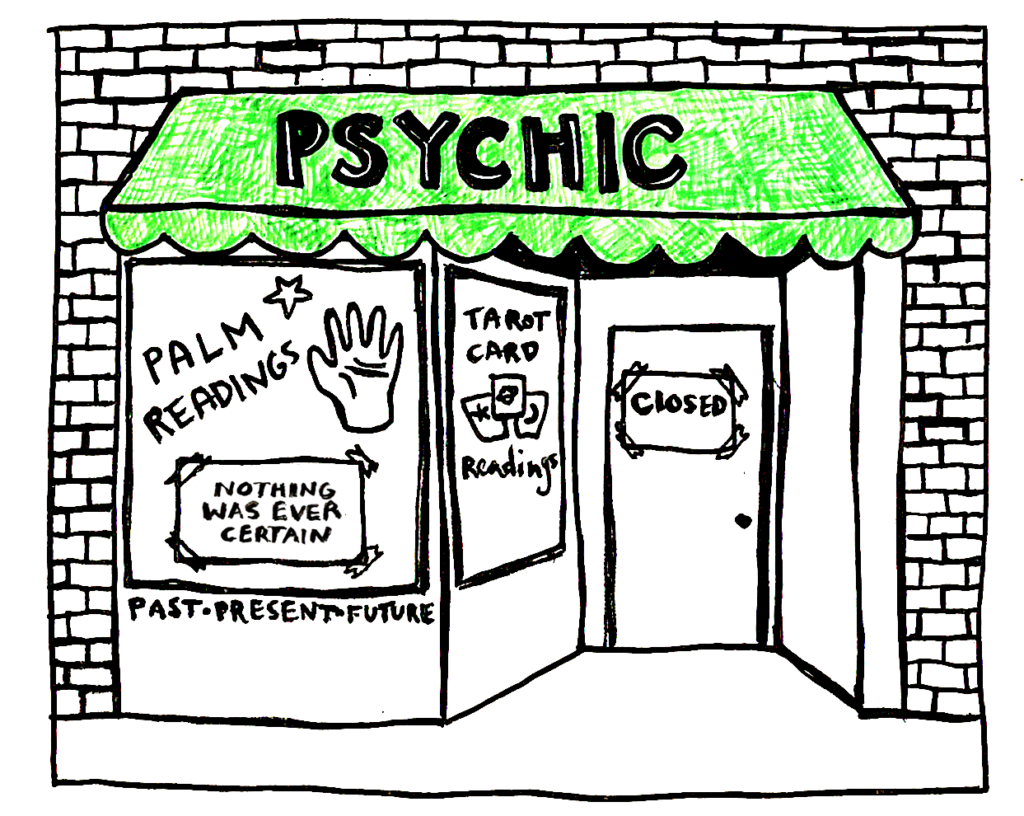
Recent initiatives by the city of Grinnell and Grinnell’s Chamber of Commerce have been aimed towards increasing the availability of affordable housing in town, but some disagree on how effective they can be.
The Chamber of Commerce’s most recent two email blasts highlighted Grinnell’s efforts in housing development and encouraged subscribers to build their home in Grinnell.
The Chamber has been pushing housing development because Grinnell has been struggling with a large population of in-commuter employees, which can have a negative effect on a community’s economic prosperity. According to a 2011 informal study by the Chamber of Commerce, 3,000 of Grinnell’s employees were classified as in-commuters living outside of city limits.
Chamber of Commerce President and CEO Angela Harrington said that it is necessary for Grinnell’s economic welfare to increase the number of Grinnell employees living in town and spending their paychecks at local businesses.
“If all the workforce takes their paycheck elsewhere, then there’s not enough money circulating in town to have all the amenities college students want … and there’s not enough to support families—young families especially,” Harrington said.
Independent research conducted by the Chamber found that Grinnell’s high rate of in-commuter employees was due to the lack of housing availability. The city of Grinnell then commissioned a formal housing market assessment in 2012 that concluded that Grinnell was roughly 350 housing units short of being able to house the city’s in-commuter workforce.
Grinnell has few rental housing options for newcomers to the town, and the options it can provide are mostly older homes that need updating or restructuring.
“There’s not a lot of affordable new housing in town. Young professionals sometimes want something a little different [than single family dwellings converted into rental apartments],” said Ryan Ness, a Grinnell City Building and Planning Assistant.
Since it released its 2012 housing study, the Chamber has increased efforts to provide housing for its employees.
“Everyone knows that we’ve begged, borrowed and stolen every resource we can,” Harrington said.
Making use of state aid, the city of Grinnell applied and has been awarded a Section 42 grant, which is a stipend to help provide affordable rental housing. With the help of Section 42, Hubbell Homes, one of the largest contractors in the state of Iowa, is scheduled to start construction on 77 new rental lofts in the historic Spaulding Center in downtown Grinnell in January. 50 of these units will be classified as income restricted. These units are intended to be accessible to new workforce employees with beginning salaries.
“[These units] are going to be available to everybody, not just the wealthy or the upper middle class,” Ness said.
Still, some have expressed concerns that the new units will not be accessible to lower income families.
“At the rents they were proposing to charge, which are totally not final, but comparing those proposed rents to [our] regulations … we probably can’t access that structure [to provide housing for low income families],” said Sharon Van Dyke, an employee of Grinnell’s rental assistance program.
The city of Grinnell acknowledges that there are still improvements to be made. While the new lofts will provide workforce housing, there is still a large demand for market rate rentals and single and multi-family homes.
In order to combat this issue, the Chamber has worked in conjunction with city manager Russ Behrens to provide 100 percent tax abatements, or tax exemptions, for 10 years on new housing projects.
“[Tax abatements] can be equivalent to about 40,000 dollars to 50,000 dollars on a 200,000 dollar home. It’s a really big deal. This is the max that the city is allowed to provide according to state … law in order to be really supportive of trying to get new housing starts on the way,” Harrington said.
Still, the price of construction is too high to encourage new homes to be built and marketed as rentals. Harrington hopes that new building incentives and the Hubbell loft project will encourage people to upgrade to newer homes, allowing their previous residences to be open as a more affordable option for those looking to rent homes or apartments in town.
Van Dyke also expressed uncertainty about whether or not these initiatives will be enough to encourage higher income families to build or rent new homes.
“Will building [the Spaulding lofts] then create some outflow, [causing] people not on the rental assistance program to move to a newer unit and vacate their current unit? Possibly. That’s something we can’t statistically pull down and evaluate. Historically, new construction hasn’t created any significant outflow,” Van Dyke said.
Even so, Ness is optimistic about new housing starts in town.
“With these incentives … it just makes all kinds of sense … to move or build [in Grinnell],” Ness said.
























































national health • Sep 19, 2014 at 11:48 am
Hi there! This post couldn’t be written any better! Reading this post reminds me of
my previous room mate! He always kept chatting about this.
I will forward this article to him. Pretty sure he will have a good read.
Thannks for sharing!